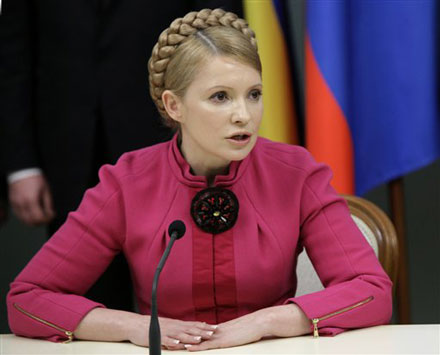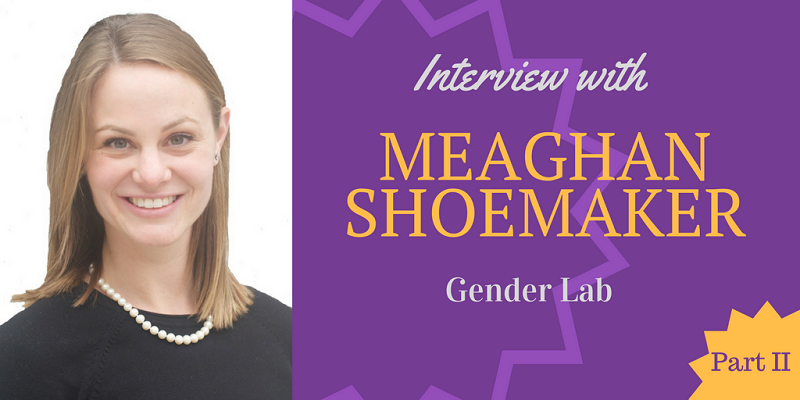As protests raged in its streets, Ukraine is under close watch by its international neighbors. Violence in the streets began, in part, because of the rejection of an Association Agreement between Ukraine and the EU (for a quick overview of the Ukrainian crisis, see Vanita Thind’s two minute guide here). President Yanukovich has also been under scrutiny for his political activities; on 21 February 2014, he signed a deal with the EU that freed former Prime Minister Yulia Tymoshenko and curtailed his political powers. When Tymoshenko was officially released from prison on 22 February 2014 she went straight to the heart of the protests at Maidan square in Kiev. Many critics question what role Tymoshenko can play in quelling the revolution and bringing Ukraine out of this crisis. This article will reflect on her position as a woman in power, the charges of corruption she faced, and assess what impact she might have in the current political climate in Ukraine.
A Quick Political Biography
Yulia Tymoshenko first entered Ukrainian politics in 1996. Prior to being in parliament, she was a business woman and controlled most of Ukraine’s energy imports. She became powerful in politics after she founded the Fatherland Party, a party with a strong anti-Lazerenko (former Ukrainian Prime Minister), anti-corruption platform, and she became the deputy minister for the energy sector. During this time, she was arrested for allegedly forging documents as part of a gas deal with Russia. Her husband was also arrested for corruption, however, the charges were later dropped for both Tymoshenko and her husband.
[captionpix align=”right” theme=”shadow” width=”300″ imgsrc=”http://natoassociation.ca/wp-content/uploads/2014/03/A-supporter-of-Yulia-Tym-008.jpg” captiontext=”Supporter of Yulia Tymoshenko.”]
In 2004, Tymoshenko was considered the “heroine” of Ukraine’s Orange Revolution where she led Ukraine in a revolt against a corrupt election. Along with her rise to power she was accompanied by President Yushchenko who became the President in 2005 while she was Prime Minister; it has been reported that the two did not get along in office. After a few months of holding office, she was dismissed by the government, although in 2007-2010 she returned as Ukraine’s Prime Minister during the economic crisis. In 2010, she ran for President again but lost to Yanukovich. In 2011, she was jailed for exceeding her authority as Prime Minister by signing a gas deal in 2009 that the cabinet opposed. In 2014, Tymoshenko was released from prison during the Ukrainian crisis. Her release came from a vote in parliament that amended the criminal code which was altered during the EU-led deal that Yanukovich signed in late February 2014.
Power Dressing and Tymoshenko
In Power Dressing: First Ladies, Women Politicians & Fashion (2011), Robb Young discusses how women use their style to express their values, beliefs, and policies. Taking this idea in mind, we can look at how Tymoshenko has used fashion to portray her political desires during her office in 2007-2010. We can speculate on what she desires for the future of Ukraine from her most recent public visits at protest sites in Ukraine.
Before becoming the Prime Minister of Ukraine and during her career as a business woman, Tymoshenko had long and dark hair that was not often styled in an up-do. After her first corruption scandal, it is claimed that she hired a consultant to reinvent her image. Her current image is described as “a modest village teacher, with her folksy braided hairstyle.” Applying Young’s thesis to Tymoshenko’s style, her hairstyle is meant to engender patriotism, as it dates back to the early days of Ukrainian folklore. Moreover, images of folklore are used as nationalistic tool after the Orange Revolution, and undoubtedly, Tymoshenko aimed to evoke nationalistic sentiments in the Ukrainian people and in the EU. This explains why Tymoshenko also changed her hair colour to a lighter blonde; blonde can represent purity, innocence, and royalty, a series of nostalgic tropes that can be related back to the EU and its religious roots in Christianity.
[captionpix align=”left” theme=”shadow” width=”300″ imgsrc=”http://natoassociation.ca/wp-content/uploads/2014/03/ukraine4.jpeg” captiontext=”Yulia Tymoshenko giving a speech shortly after her release from prison.”]
Hours after Tymoshenko was released from prison she was seen at the Maidan Square in Kiev wearing a black non-material jacket, black pants, and sitting in a wheel chair, still sporting her braided blonde hairstyle. At the square, she encouraged protestors and told them that “this is your victory because no politician, no diplomat could do what you have done. You have removed this cancer from this country.” Thinking about her image and her words, we can speculate on Tymoshenko’s potential political campaign: much of her appearance at the Square resembles hardship and suffering. Although she was suffering some pain in her back, the use of the wheelchair runs parallel to the current crisis in Ukraine and the position of the Ukrainian people. Her claim that the protesters “remov[ed] this cancer from this country” calls to mind “a fight against cancer;” the analogy here being that she is presenting herself as an ailing patient. Her black clothing resembles mourning for the Ukrainian state, while her golden braids remind the people of their national history and offer them something to aspire to. It appears that Tymoshenko is positioning herself as a member of the people, as even her recent release from jail might be seen in a metaphorical sense as her being released from the tyranny of President Yanukovich.
Women and Corruption
A recent tweet from BBC correspondent Duncan Crawford reflected on Tymoshenko’s position in the political climate: “Response to Yulia Tymoshenko’s speech is quite mixed. Many people in the crowd were skeptical, saying that they do not want her to be the next President.” Serhiy Daniley, a Ukrainian protester, said that “we need to check absolutely everyone who has been in power for corruption and crimes. Tymoshenko had her chance, she is no better than the rest. We need new people in power.” The question remains whether Tymoshenko’s most recent political gestures can win her over to the people of Ukraine. Is Tymoshenko ready to relate to the people and help bring a nation back to order after undergoing a serious political crisis?
Interestingly, recent political discourse on women in power states that women are less prone to entering situation of corruption. Certainly, this statistic cannot speak for all women in politics and it is hard to see what bearing it might have on Tymoshenko’s case. Rather than make general claims about gender and politics, one might consider the individual in question to determine whether or not they are fit to be leaders of a nation’s people.



